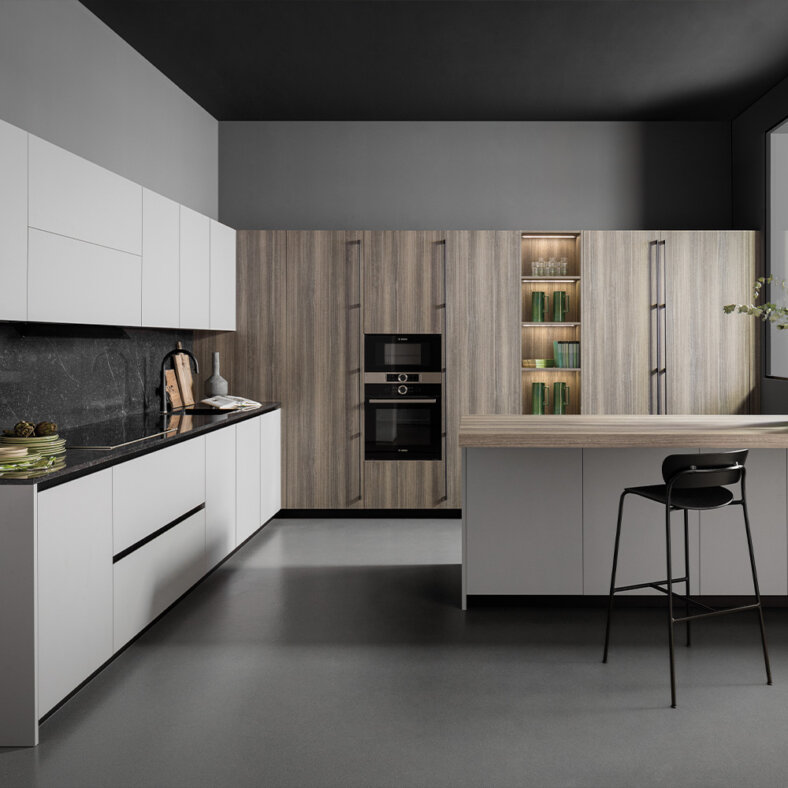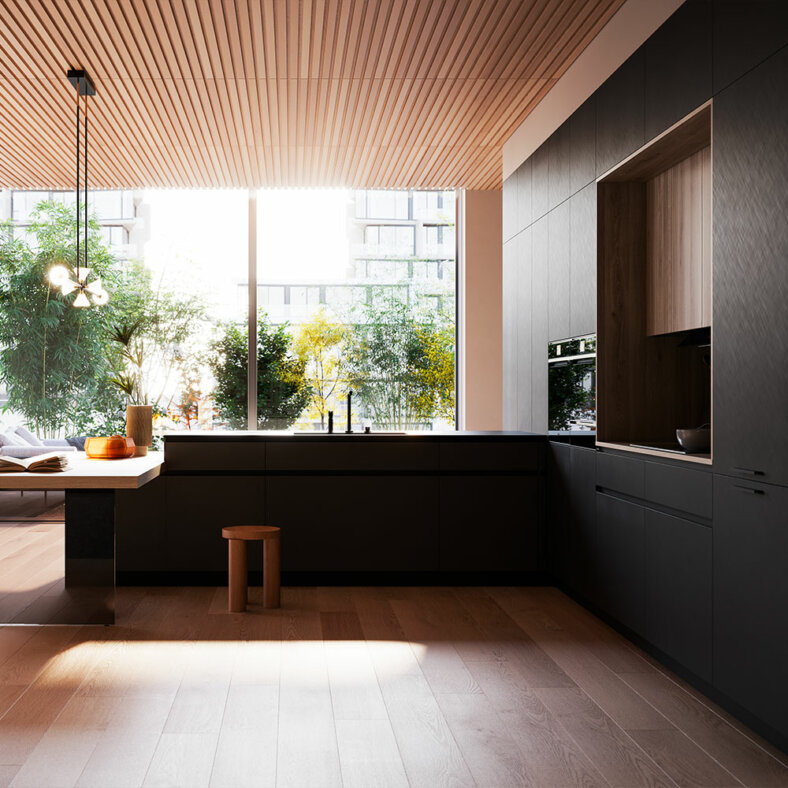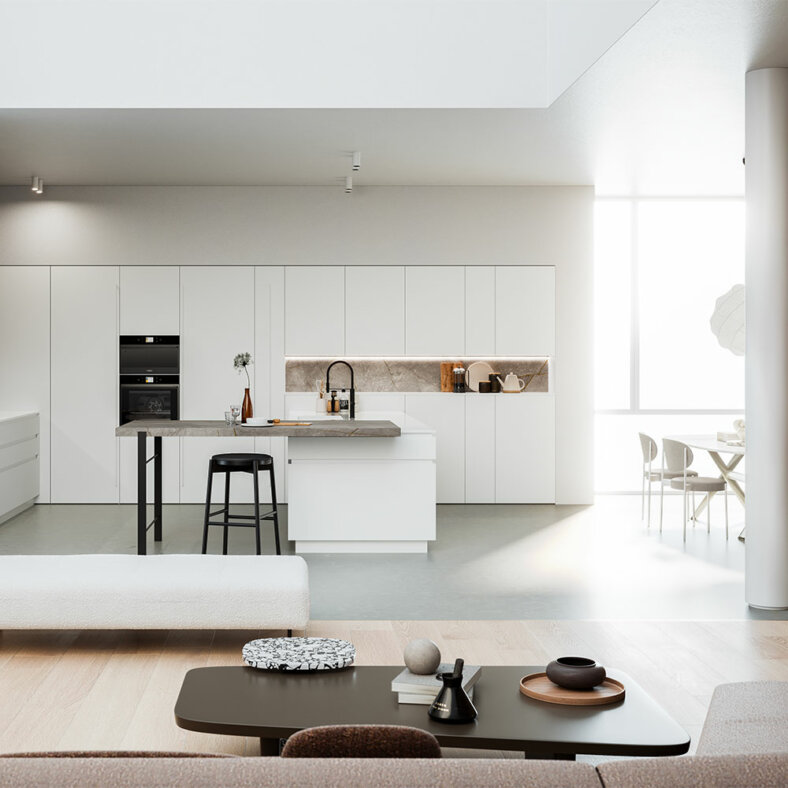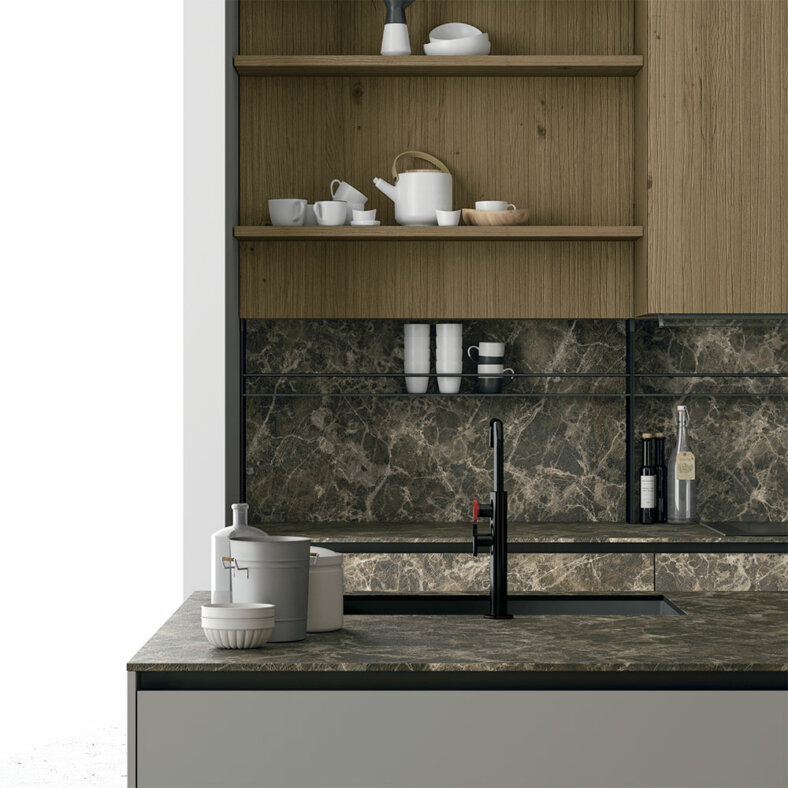Suggestions and guides
Laminate
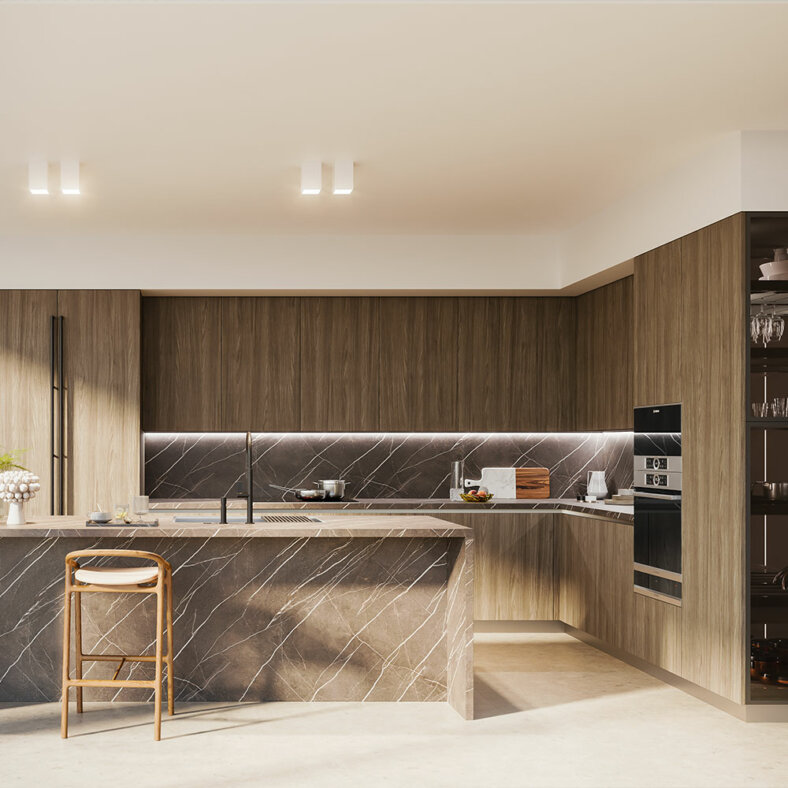
The perfect imitation of the finest materials
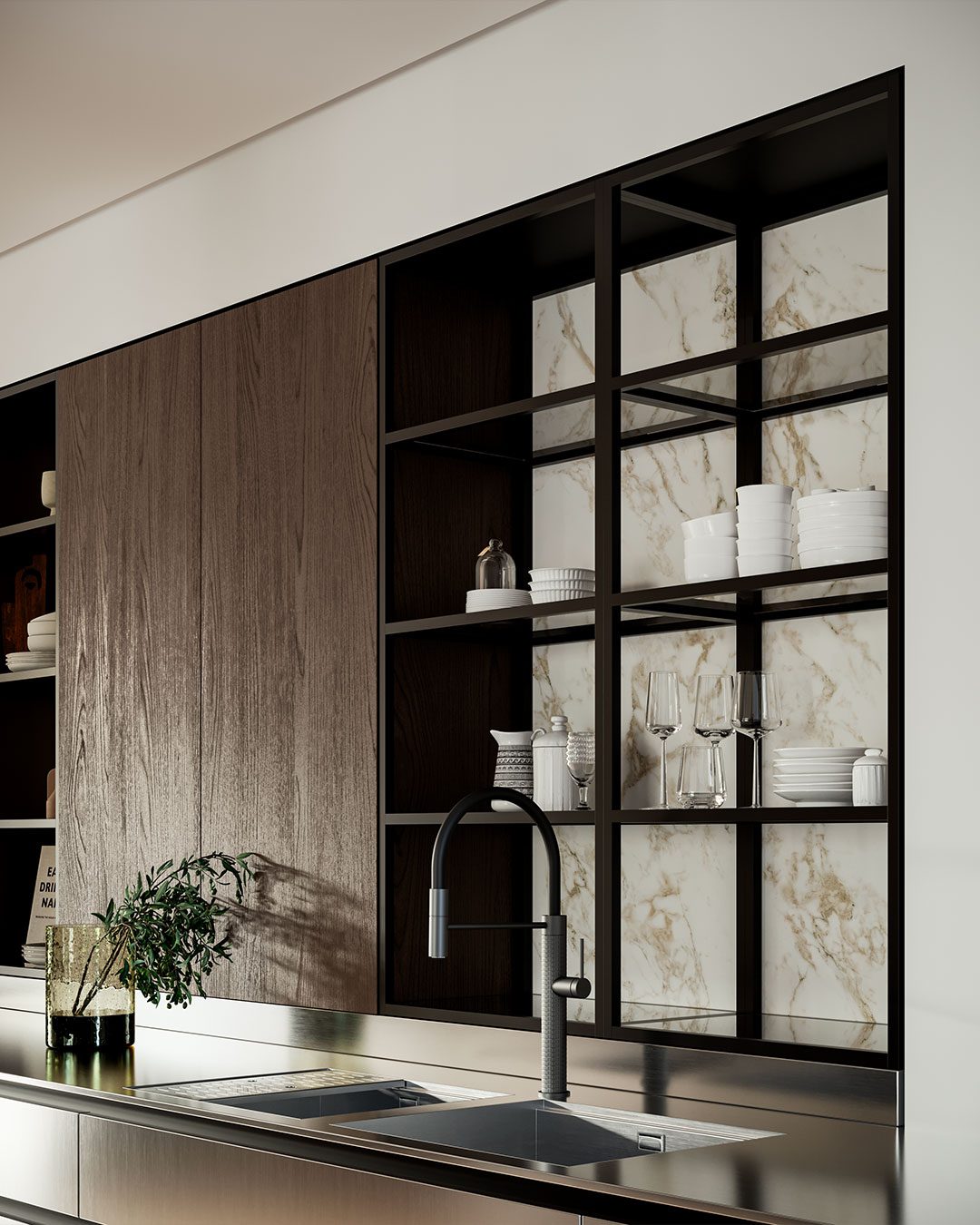
What is laminate?
Laminate consists of a raw panel finished in hot pressed layers of paper soaked in thermo hardening resins, followed by a layer soaked in decorated melamine resins, finished with a protective external layer. The decorated layer can be coloured or printed to obtain different chromatic effects, including wood finishes, which continue to be popular for their excellent simulation of real materials at affordable prices.
Types of laminate
HPL Laminate – High Pressure Laminate
The highest quality laminate is subject to very high pressure which makes it extremely resistant; it is used above all for elements subject to high stresses, such as work tops.
CPL Laminate – Continuous Pressure Laminate
Placed under continuous pressure, though not as strong as HPL, it is less resistant and thus used above all for elements which are not subject to stresses, such as fronts, rear and side panels.

Characteristics of laminate
Laminates offer the great advantage of being available in very different thicknesses and above all a vast range of aesthetic solutions, in terms of colour, brilliance and three-dimensionality. They offer truly lifelike versions of rough, porous and embossed surfaces, realistically simulating stone, cement and wood. Laminates are applied to raw panels with minimum formaldehyde emissions (class E1, UNI EN 13986/2005).
Kitchen fronts in laminate
Laminate kitchen fronts are comprised of a raw panel, finished in sheets of laminate of varying final thicknesses, which vary from model to model and from manufacturer to manufacturer. Doimo Cucine, for example, uses a particle board panel finished in HPL laminate on two sides and bordered in ABS, a resistant synthetic thermo-plastic, fixed using polyurethane glues.
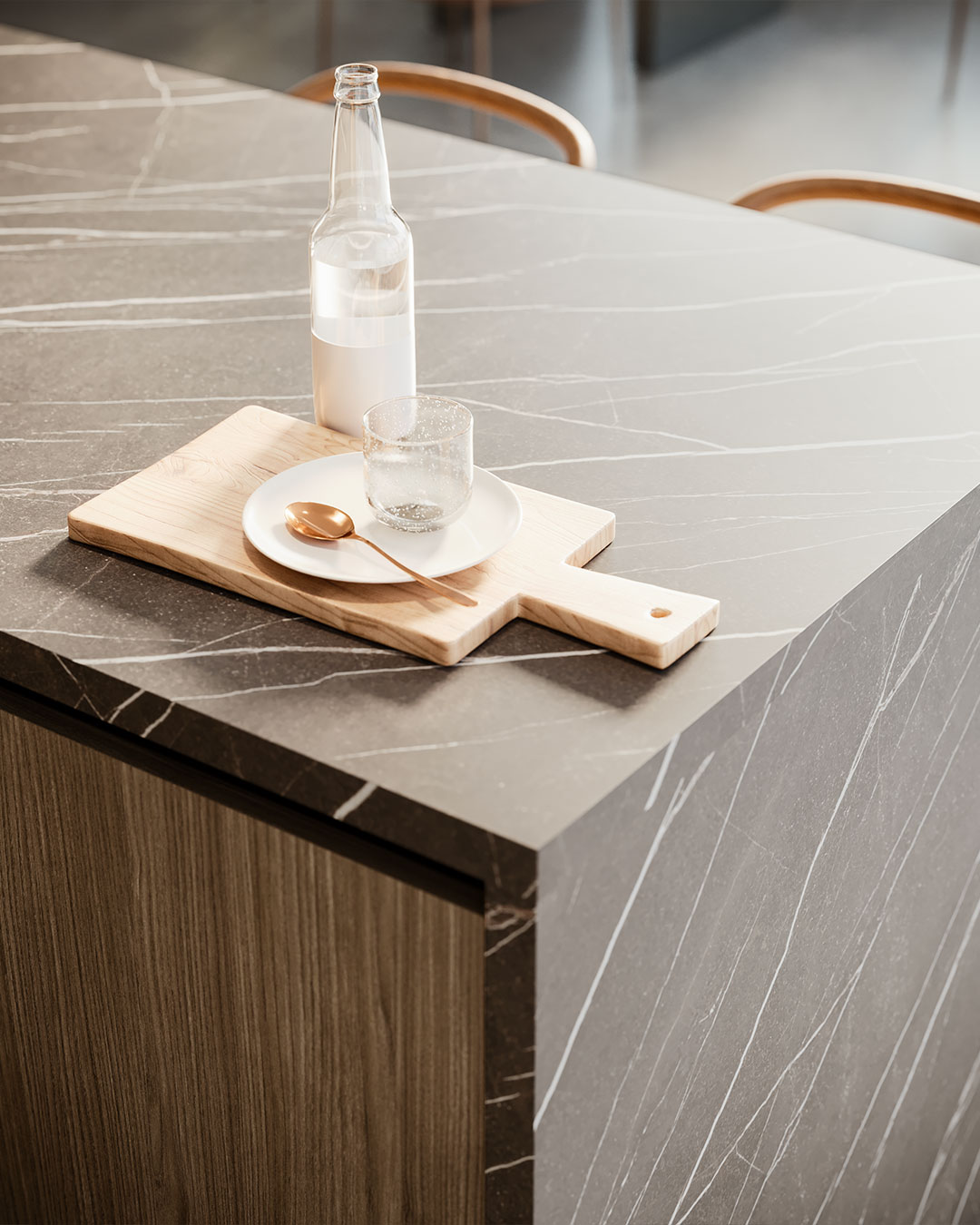
Laminate kitchen work tops
Laminate work tops, given their use, are made from HPL Laminate, the most resistant and affordable solution with respect to other materials. Doimo Cucine uses water-repellent raw particle board panels, finished in HPL Laminate, with edges in solid colour laminate or coloured ABS. The same material is often used to construct splashes in cooking areas or matching kitchen shelves.
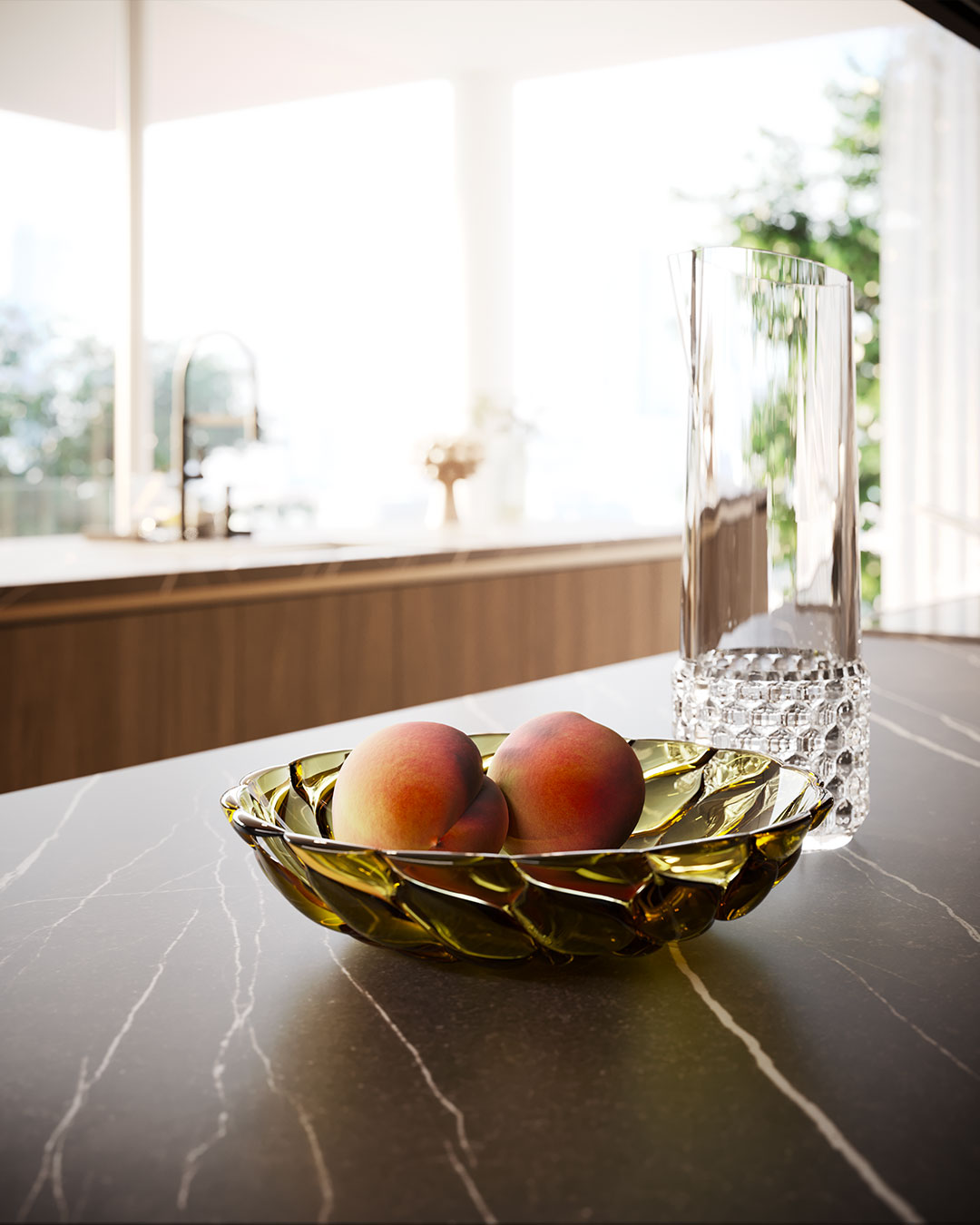
How to clean a laminate kitchen
Laminate is very easy to clean using a soft cloth and a neutral liquid detergent rinsed with a soft cloth and carefully dried to avoid streaking or opaque areas. For:
- stubborn stains use soft brushes or sponges
- limescale stains use a sponge soaked in tepid water or a dash of vinegar
- ink stains immediately clean the surfaces with a cloth soaked in detergent or denatured alcohol, only when permitted in the manufacturer’s instructions
Avoid the use of:
- scouring pads
- abrasive creams
- powder detersives
- acetone and other solvents/diluting agents
